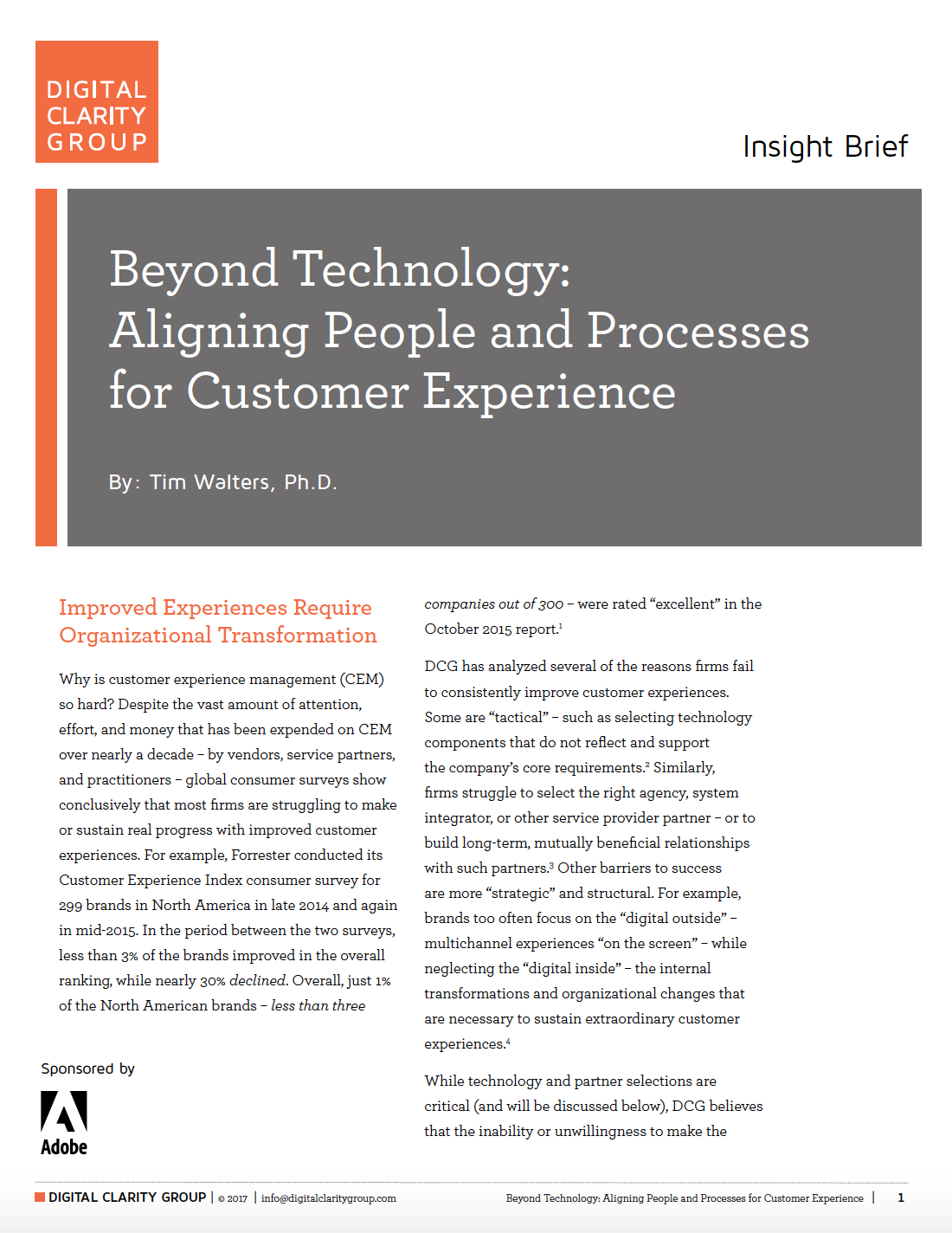Beyond Technology: Aligning People and Processes for Customer Experience

Vast amounts of attention, effort, and money have been expended on customer experience management (CEM) over nearly a decade – by vendors, service partners, and practitioners. Yet global consumer surveys show conclusively that most firms are struggling to make or sustain real progress with improved customer experiences. DCG has analyzed several of the reasons firms fail to consistently improve customer experiences. Some are “tactical” – such as selecting technology components that do not reflect and support the company’s core requirements. Similarly, firms struggle to select the right agency, system integrator, or other service provider partner – or to build long-term, mutually beneficial relationships with such partners. Other barriers to success are more “strategic” and structural. For example, brands too often focus on the “digital outside” – multichannel experiences “on the screen” – while neglecting the “digital inside” – the internal transformations and organizational changes that are necessary to sustain extraordinary customer experiences.
While technology and partner selections are critical, DCG believes that the inability or unwillingness to make the requisite internal people and process changes is the primary reason that marketers and their brands have so far struggled to master CEM. When firms adopt new technologies for CEM but retain the old structures, roles, habits, and key performance indicators (KPIs), consumers are bound to be unimpressed.
In this paper, Tim Walters uses Conway’s Law, formulated by Dr. Melvin Conway in 1967, to explain a fundamental incompatibility at work in how companies approach CEM – namely, between the way that organizations produce customer experiences and the way that customers experience them. Tim then describes the formula for success: the right people, around the right processes, for the best customer outcome.
Download now







